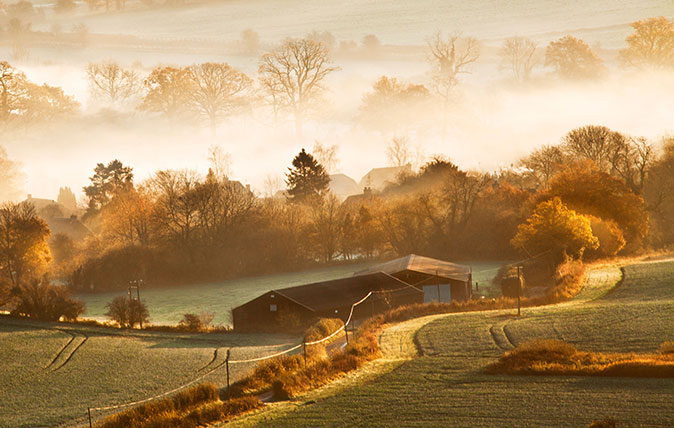Is the farmland price boom at an end after two decades?
Farmland has been outperforming every other part of the property market for two decades – but can that continue in a post-Brexit world? Penny Churchill spoke to an expert to get his view on what might happen in 2018.


For the past 15–20 years, farmland prices have out-performed almost all the rest of the market, however, the uncertainty surrounding the Brexit process, notably the future of agricultural subsidies and exports, has caused land prices to fall. Hopefully, this situation will be temporary, as in the future we may rely on more food being homegrown rather than imported.
With inconsistency the underlying trend throughout 2017, predicting future trends in the market for farmland and farming estates is no easy matter, says Benjamin Taylor of Cambridge-based consultancy Bidwells, which manages more than £5.2 billion in UK property assets, including thousands of square miles of the English and Scottish countryside and coastline.
Mr Taylor identifies a number of recurring themes that have characterised the farmland market in the past 12 months. First, a sharp fall in the amount of good quality, bare-arable and root-cropping land coming to the open market.
'Properties to either sell well and quickly, or take 10 months or more to find a buyer'
Second, a preference among investors for large-scale holdings of 1,000 acres or more in a southern or eastern location and development potential – elements that are ‘probably now the top three determinants of price, with land quality seemingly coming an increasingly distant fourth’.
Finally, an increased insistence on confidentiality, which has resulted in many more off-market deals (both in terms of outright sales, as well as land swaps) than has been the case for several years.
Although few large commercial farms were publicly advertised in 2017, the general trend has been for such properties to either sell well and quickly – as in the case of the 1,200-acre Clopton Green estate, with its farmhouse, cottages and farm buildings, at Rattlesden, near Bury St Edmunds, Suffolk, which sold in August through Savills – or take 10 months or more to find a buyer.
With 2017 ending in an atmosphere of growing uncertainty, as the UK’s shift away from direct-subsidy support payments – post-Brexit – becomes a foreseeable reality and interest rates nudge upwards, the likelihood is that marginal land in less-sought-after areas will still struggle to sell.
Sign up for the Country Life Newsletter
Exquisite houses, the beauty of Nature, and how to get the most from your life, straight to your inbox.
On the other hand, Mr Taylor is confident that some places will continue to thrive, insisting that large, good-quality farms offered for sale in 2018 will continue to attract strong interest from serious investors.
-
 About time: The fastest and slowest moving housing markets revealed
About time: The fastest and slowest moving housing markets revealedNew research by Zoopla has shown where it's easy to sell and where it will take quite a while to find a buyer.
By Annabel Dixon Published
-
 Betty is the first dog to scale all of Scotland’s hundreds of mountains and hills
Betty is the first dog to scale all of Scotland’s hundreds of mountains and hillsFewer than 100 people have ever completed Betty's ‘full house’ of Scottish summits — and she was fuelled by more than 800 hard boiled eggs.
By Annunciata Elwes Published
